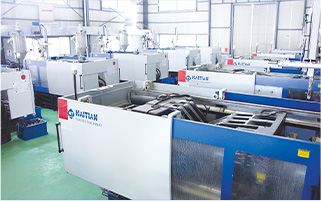Tel
0577-62795555
Tel
0577-62795555
News & Topics at Hont Cable Ties

Nov , 26-2021
Mar 25th Shows New Historical High Prices For NYLON 66Jul , 19-2021
UV Black Cable TieIn the power communication industry, in order to better realize the wiring and ensure that the cable lines can be better classified, choosing a better cable tie at this time will definitely have a better effect. The plastic cable ties are very light and have a better fixing effect. According to the requirements of different occasions, different specifications can be selected, so that the quality of network cable ties will also be different.
Communication industries have a relatively large demand for extruded stainless steel cable ties. As we all know, a communication network cable strap often has a lot of lines in the production process. If these different lines are not well organized, they will lead to the production process. The confusion of the output lines leads to a different problem in the information Transmission Systems. Therefore, at this time, in order to classify the wires of different lines, you need to use cable tie wires for necessary binding. At present, the application of ethernet cable tie in communication is very wide and can meet the diverse needs of customers-from simple bundling applications to specific uses under extreme conditions.
The method of bundling cables should be unified. When bundling cables with stainless steel cable ties, start from the beginning of the cable and bind the cables firmly. Use the same method at a certain distance to bundle the cables until they reach the end of the cable. This will ensure that the cables are neat and beautiful after bundling. Ensure the normal transmission of current and signal.
Pay attention to the neatness of the cables when bundling. According to the specification table of stainless steel cable ties, choose the appropriate size of cable ties to bundle the cables. Not only that, when tying the cables together, pay attention to the neat arrangement of the cables. Do not cross chaotically. Keep the cables flat and vertical. Straight and neat arrangements will not affect the follow-up use of the cable and bring convenience to follow-up work.
Choosing the appropriate cable ties. It’s better to confirm the working condition of the object you are binding, whether it is an ordinary natural environment or a more corrosive environment, and choose the appropriate material according to different environments. Take care of the requirements of the object to be tied, whether it requires a very fast tightening or just a normal tightening, and whether it is hard, hard, or soft. Choose different styles for different situations. Cable ties, such as plastic-coated stainless steel ties, rolled stainless steel ties, format stainless steel ties, bead-type stainless steel ties, coated stainless steel cable ties, ethernet cable gland and so on. The third step is to determine a good brand. It is recommended to choose a cost-effective brand under the premise of meeting the requirements. The selection of stainless steel cable ties is not the more expensive the better, nor the cheaper the better. To know if it is expensive, there must be quality assurance, whether there is the possibility of moisture. If it’s too cheap, it’s not necessarily better. The raw materials of some stainless steel cable ties are cheaper than the products.
Cable Ties has a wide range of applications in the fastening of indoor communication cables and outdoor communication cables. The stainless steel cable tie guarantees the safety of the communication cable with its good tightness; the unique stainless steel cable tie reserves the space for the cable to expand due to heat. While ensuring reliable tightness, the surface is not scratched.
● Self-locking Nylon Cable Ties ● Tensile Enhanced Cable Ties ● Releasable Cable Ties
● Marker Cable Ties ● Mountable Head Cable Ties ● Push Mount Cable Ties
● Hook & Loop Cable Ties ● Weather Reststant Cable Ties
Related Cable Tie Products
Related Cable Tie Applications
News & Topics at Hont Cable Ties
